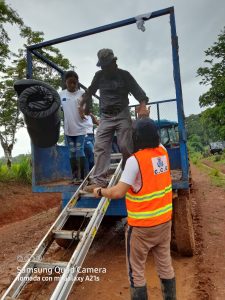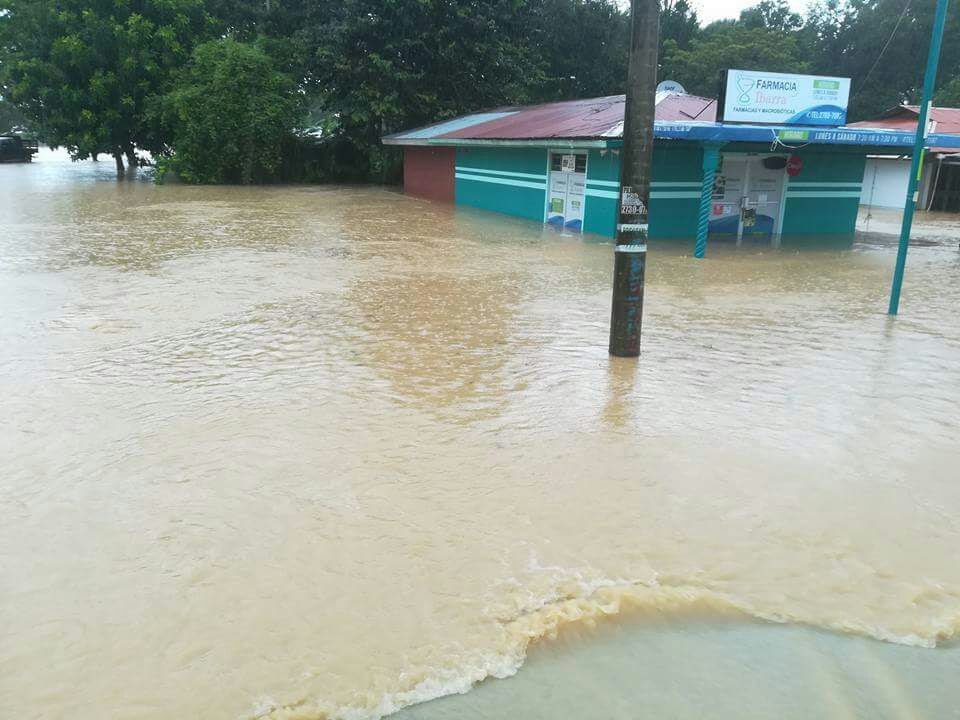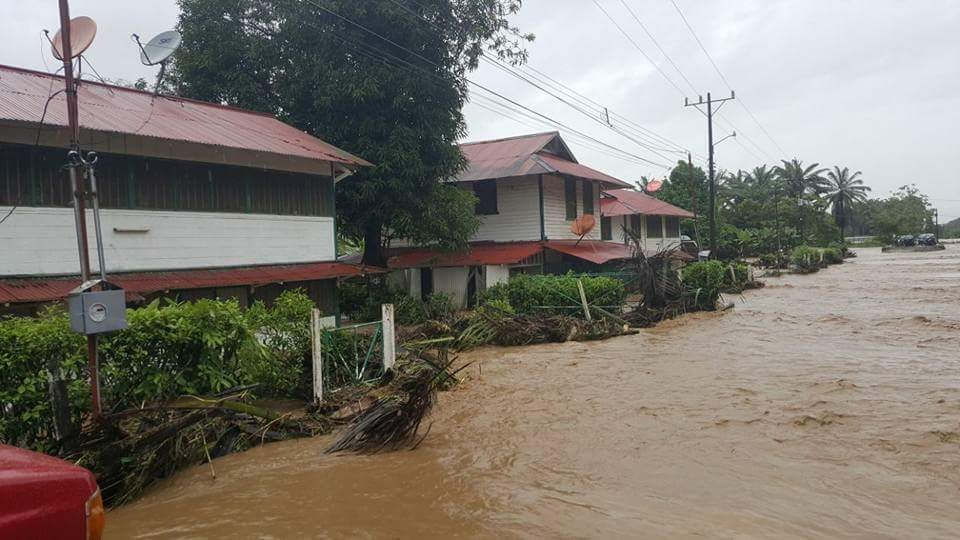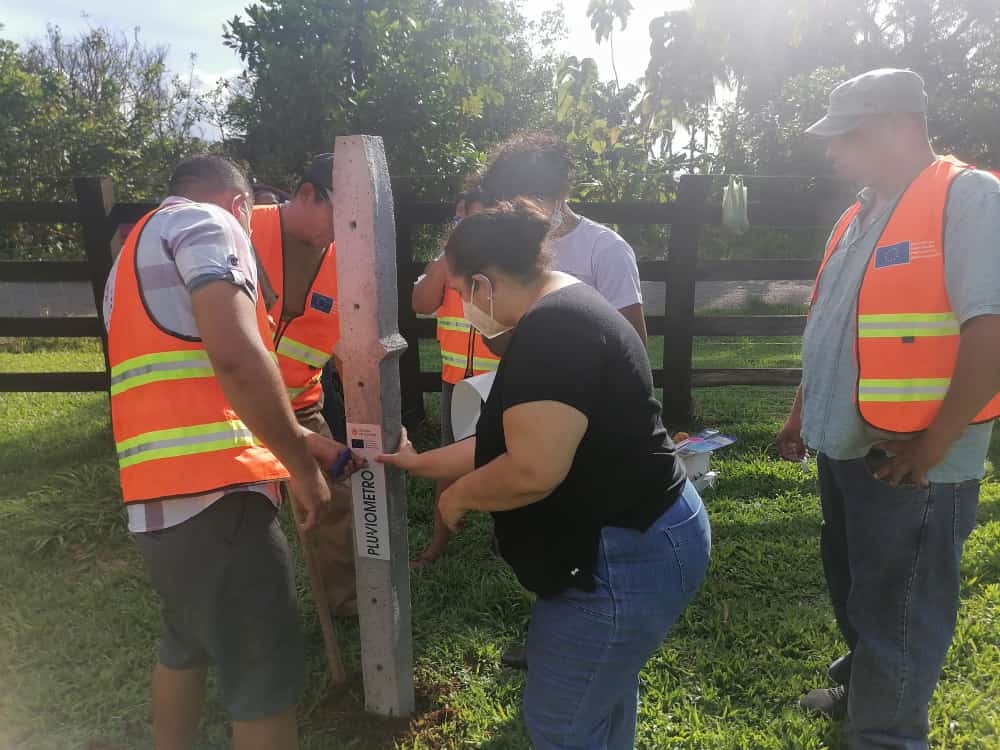Deadline, a contest based at the University of Costa Rica, challenges journalism students to create a story for publication in a Costa Rican outlet—for some, their first ever—in less than 24 hours. Cristian Mora Pérez and David José Bolaños Jiménez set the goal of publishing a story at El Colectivo 506. We asked them to contact two journalists who’d published stories in our magazine in July 2021 about risk management in their rural communities, to see how their hometowns fared during the 2022 storm season. Here, Cristian and David share what they discovered.
Costa Rica is highly vulnerable to various threats such as floods, earthquakes, and other disasters. Many Costa Ricans live in high-risk areas without substantial knowledge of disaster risk management.
In our July 2021 edition, Watershed, El Colectivo 506 reported on this topic hand-in-hand with journalists from rural areas of the country who explored how their own communities had learned from the repeated damage caused by hurricanes and floods. Two of these journalists reported from the canton of Upala and from Ciudad Cortés, in the canton of Osa.
Upala and Ciudad Cortés case: risk management and prevention.
Upala, located in northern Costa Rica, has always been characterized as a region vulnerable to disasters. According to our story by journalist Katherine Benavides, for many upaleños have resigned themselves to the idea that rivers will regularly overflow and invade their homes, resulting in material losses. However, in years prior to 2016, when Hurricane Otto brought catastrophe to the region, it had not been possible to consolidate effective municipal and community organizations in disaster risk management. The canton was ill prepared to deal with a disaster of Otto’s magnitude.

Ciudad Cortés, located in the Southern Zone, has benefitted throughout its history from its coastal location next to the Térraba River, which made it a commercial hub. As the local journalist Esteban Calderón showed in his story for “Tormentas maestras”, its location also left the community hugely vulnerable to flooding—at least, until 1956, when the United Fruit Company built a dam on the river.
However, when the company left the country, the levees were abandoned and frequent floods became a part of community life once more.
In 1966, when the city was hit by Hurricane César, the decision was made to relocate the city. Various institutions such as the Municipality of Osa and the Pacífico Sur High School have since been moved. Esteban explained, however, that many of the people who have lived there all their lives and who are deeply rooted in their historic town refuse to leave. It is these populations that are currently suffering and waiting for preventive solutions for the floods they’ve lived through.
In November 2022, as part of the Deadline project, we set out to learn what has—and hasn’t—changed in these two communities since Esteban and Katherine published their stories in mid-2021.
What’s happened
One year and three months after the publication of “Watershed,” which reported on solutions that these communities have implemented to reduce the impact of emergencies, these communities continue to be affected by storms. For example, several areas of Ciudad Cortés were flooded on Oct. 9, 2022, due to a break in the levee, thanks to high tides in the area and heavy rains from Tropical Storm Julia. Likewise, in Upala, heavy rains in July of this year caused rivers to flood in sectors such as Higuerón, Alta Mira and Bijagua. According to Katherine, Storm Bonnie, also in July, affected the community of Cuatro Bocas de Upala, where the Niño River overflowed its banks, causing flooding and damage to the community.
But have disaster risk management and coordination efforts made progress in the Upala and Ciudad Cortés in recent months?
The case of Upala
In Upala, Katherine explains that the primary focus of the Municipal Emergency Commission has continued to be activating the preventive flood alarm system, and using social networks to ensure communication among risk prevention committees the canton’s various communities. The municipality has worked with the Public Transportation Ministry’s Stormwater Works department to clean up the Guacalito River, thus preventing flooding. Katherine, who worked for the municipality during Hurricane Otto, indicates that the use of the Early Warning System (SAT)—a technical-scientific system that measures the water level of the Zapote River—continues to be very useful for the canton.

Katherine reports that Upala’s risk management efforts have included training that allows community commissions to learn to use measuring devices such as rain gauges, which are made by hand by the communities. The creation of volunteer brigades trained to use basic rescue equipment and risk maps, with knowledge of vulnerable areas, have enabled communities to start acting on their own. Today, the Community Emergency Committees can be proactive, notifying the Municipal Emergency Committee and the National Emergency Commission (CNE) about disaster alerts, she says.
In another departure from the past, the Upala Municipal Emergency Committee has become an important actor in risk management. For example, if the SAT system fails to work, Katherine explains that the Municipal Committee is in charge of maintaining active communication with the population through social networks. It shares information and updates so that the community committees are aware of the instructions they must follow in a possible risk situation.
She says that the commitment of the people of Upala is responsible for these achievements with respect to risk management, as well as the support of various institutions and organizations, in the wake of Hurricane Otto. All this has made the canton of Upala “a benchmark when it comes to emergency issues,” according to Katherine.
However, she indicates that there are still limitations, such as the lack of a Regulatory Plan to move Upala’s commercial center hub to another, less vulnerable place. This idea is very unpopular among many residents of the canton, due to the connection they feel to downtown Upala. Sewage management is another problem in the community, as well as the limited reach of the only flood warning system. Likewise, the journalist points out that additional early warning instruments are needed, but are too expensive for the community to purchase at this time.
The case of Ciudad Cortés
For his part, in Ciudad Cortés, Esteban found in his reporting that the first line of response to flooding was a new levee. Today, the project is still under construction. In its absence, the Local Emergency Commission has acted in response to the floods that affect the area—for example, the flood on October 9.
Esteban is a reporter for Costa Ballena TV and assistant principal of the Pacífico Sur High School in Ciudad Cortés. He told us in our recent interview that “aid to the town of Ciudad Cortés does not arrive on time.” Because of this, the community has gotten organized so it can create its own solutions to the natural disasters that affect the area.

The Local Emergency Commission of the first district of Cortés has taken charge of setting up shelters in different area schools after a flood. This response allowed people affected by the floods on Oct. 9 to find a safe place to spend their nights, Esteban says. The commission also monitors a tower on the Térraba River that marks water height so members can alert the community of possible floods. The communities of Pérez Zeledón and Buenos Aires have also developed their communication network so that the Local Emergency Commission of Ciudad Cortés can learn about potential disasters more quickly.
According to Esteban, another relationship that has enabled an effective response to the floods is that of the Ciudad Cortés Community Emergency Committee and the Osa Municipal Committee. These committees showed good communication and quick action in response to the Oct. 9 floods, he says. However, “the municipal component was still somewhat lacking, since we expected that they would have assign vehicles to deal with the emergency, and they didn’t,” Esteban adds.
While progress in the construction of the levee has been limited, it still helped to reduce the impact of the October floods somewhat, he says.

One challenge Ciudad Cortés faces is the fact that some of its residents are not interested in training on disaster risk management.
“People don’t do drills or anything, because it’s very common for them to simply bring their things up to the top floor of their houses,” Esteban reports. “They wait for the water to subside, and then they go back into their homes.” The community also pins its hopes on the dam under construction, believing it will help minimize the overflow of the Térraba River once it’s completed.
Expert voices
On Oct. 19-20, the Fifth National Congress on Disaster Risk Management and Adaptation to Climate Change was held virtually and in person at the Universidad Nacional. It was organized by the Disaster Risk Management Subcommittee of the National Council of Rectors (CONARE) and the CNE in collaboration with the United States Agency for International Development (USAID). The congress was designed for people who make up Costa Rica’s National Risk Management System of Costa Rica: institutions, organizations, private companies, emergency committees, communities, civil society, and other relevant entities.
There were more than 1,000 registered participants, with 53 chosen to provide presentations, audiovisuals, or posters for the congress. Most presentations during the two days of meetings focused on research on climate change and risk management.
According to the coordinator of the event, César Sancho of CONARE’s Disaster Risk Management Subcommittee, many presentations focused on the threat, but not on vulnerability. César tells us he believes studies should focus less on the flood or the natural event itself, and more on the communities and the risks they face. César says community-level work is needed, and more comprehensive awareness of the people who are directly affected by these issues.
“You have to know how to reach people to train them in risk management so that leaders at the local level can scale up and apply it,” says César.
Another topic that, according to César, was discussed in depth at the event is the challenge of understanding the needs and capacities of different sectors—how to reach people with disabilities, children and adolescents, the elderly, and indigenous communities at the time of prevention and risk management. In addition, the topic of zoning was discussed at length, including interdisciplinary approaches that can contribute to zoning that supports preparedness. Participants also discussed the national emergency caused by COVID-19 in 2020 and how it prompted the creation of emergency response networks in the face of unforeseen situations, not only at the national level but also at the local level.
“The main thing is that we understand that [community] vulnerability has to be addressed… so that the emergencies that will continue to arrive with more frequency and force are better attended to,” says César. “We have to be willing to share, analyze, meet, and get involved with the other actors in the system. Universities aren’t the only ones with insight: we must listen to the people who live there and to the first responders [firefighters, Red Cross, police] who have to spring into action and figure out how to solve things. We need to unite and link up to achieve a better approach.”
Esteban and Katherine indicated that they had not received information about the congress. César, for his part, indicates: “We, as part of the commission, sent the call through official channels. We want everyone to participate.” He points out that it is the responsibility of local governments to inform their community emergency committees.
Both Cortés and Upala demonstrate the importance of community committees in crisis response. However, the contrasts between these two towns also tell two very different stories. Cortés was expected to show an advance of close to 40% in the construction of its levee by this date, but Esteban explains that the project has progressed no more than 25% due to problems with land ownership. The hopes placed in a structure that is advancing slowly has generated a work overload for community emergency committees, because at the moment no other alternatives are on the table.
Upala, on the contrary, demonstrates active cooperation between the community and the local government; Although it has its limitations, Katherine suggests that in the last year, risk prevention has paid off.
Upala advances, while Cortés stagnates in hope.





